Back to: Table of Contents | Chapter 6. Time of Upheaval
As a successor to director-manager John Miller, the Little Theatre board appointed Anthony Dingman to the newly renamed post of manager-director, effective with the 1971-72 season.
Dingman, head of the drama department at NC Wesleyan College in Rocky Mount, graduated from Dartmouth College, studied at the Yale School of Drama, earned a master’s degree in fine arts from Boston University, and worked on his doctorate at Carnegie-Mellon University.
Jeffrey Thomson, who earned a BA at Ripon (Wisconsin) College and an MA in design and technical theatre at the University of Washington, was appointed technical director succeeding Harry Callahan.
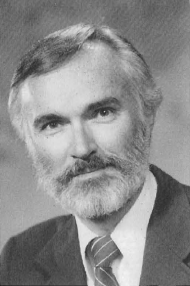
Anthony Dingman, Raleigh Little Theatre Director, 1971-1975
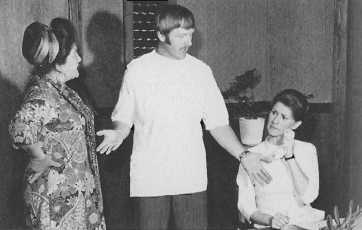
Gloria King distraught in “Cactus Flower” (1971-1972)
The 1971-72 season opened October 13 with Abe Burrows’ comedy “Cactus Flower,” featuring performances by Larry Shannon, Gloria King, Dale Hines, Bert Zipperer, Bob Armstrong, Joan Taylor Munger, Stan Serxner, Kathy Dawkins, Camille Roberts and Christopher K. Hunter. Bill Morrison of The News and Observer called it “a turkey with a 2V2-hour deathbed scene … all the pace of Ruby Keeler tap dancing in concrete wedgies.” Betty Hodges of the Durham Herald was kinder: “… Something of the uncertainty of the rare blossoms of the succulents.”
“Black Comedy” and “The White Liars” (opening December 8, 1971) had casts that included Roy Dicks, Steve Nance, Catherine Thomson, Bert Zipperer, Jill Woodlief, Diana Maupin, J. Kelly Gay III, Barbara Brown, Jack Harmon and Gordon Kelley. The Raleigh Times reviewer said the program was “well-cast, well-acted and well-directed from start to finish.”
“Arsenic and Old Lace” (opening February 2, 1972) starred Doris Boggs and Marjorie Shankle as the addled and deadly sisters. “That old stage warhorse rolled over and died last night at the Raleigh Little Theatre,” said Carol Patt of The Times. “A pleasant evening,” said Bill Morrison of The N&O. (The comedy had been done once before by RLT in 1943.)
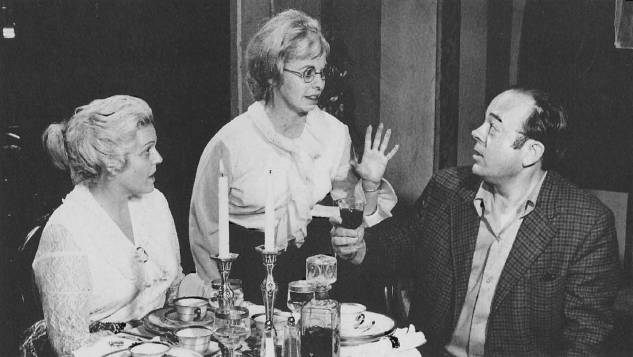
From “Arsenic And Old Lace” (1971-1972)
“Wait Until Dark” (opening March 15, 1972) featured Jill Woodlief as Blind Susy. “Just what the doctor ordered,” said Carol Patt of The Times. “Falls on its face,” said Bill Morrison of The N&O.
“How to Succeed in Business Without Really Trying” starred Jim Keeter as the young man on the move. “It closes the season with a real bang,” said The Times.
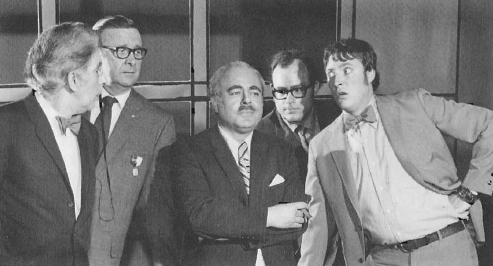
The gentlemen confer in “How To Succeed In Business Without Really Trying” (1971-1972)
After a summer production of “A Thurber Carnival” that won critical praise, the Little Theatre repeated the show September 15, 1972, as a benefit for Fannie Williams, who was marking her 20th year as housekeeper for RLT. Former Director Dick Snavely played a role in the benefit performance for Mrs. Williams, whose husband had suffered a cerebral hemorrhage.
The regular 1972-73 season opened with “Annie Get Your Gun” with Paulette Dyson in the title role. “Catchy and delightful,” The Times’ reviewer said.
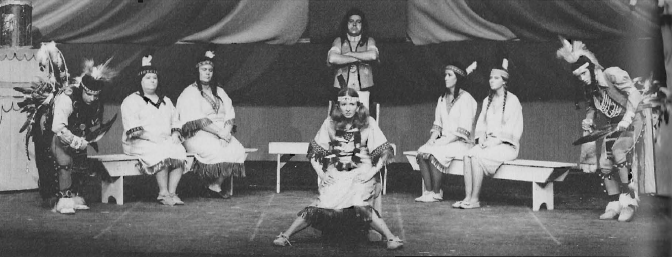
A scene from “Annie Get Your Gun” (1972-1973), with Paulette Dyson at center
“Lion in Winter” (opening November 29, 1972) featured Lorena Goodwin and Charles Austin in major roles. Those Raleigh reviewers were at it again. Bill Morrison of The N&O: “More bark than bite, or, rather, more meow than roar.” Carol Patt of The Times: “A solidly enjoyable experience.”
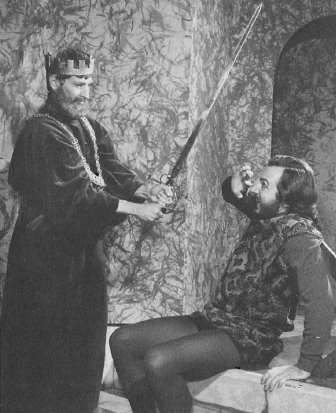
From “Lion In Winter” (1972-1973)
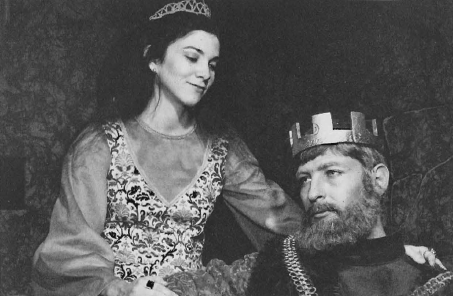
From “Lion In Winter” (1972-1973)
“The Happiest Millionaire” (opening January 31, 1973) starred Glenn Miller in the title role. The reviewers said it was “as light and frothy as a tub of concrete” and suffered from “extreme anemia.”

Scene from “The Happiest Millionaire” (1972-1973)
“A View From the Bridge” (opening March 14, 1973) was directed by Jeffrey E. Thomson and featured Harvey Bumgardner, Doris Dworsky, Linda Johnson and Jack Harmon. “A moving experience,” said The N&O.
“Oliver!” (opening May 2, 1973) starred a father-son team-Roland Lashley as Fagin, and his son, David, in the title role. “A triumph,” said The N&O “The Raleigh Little Theatre’s last and best production of the season,” said The Times.
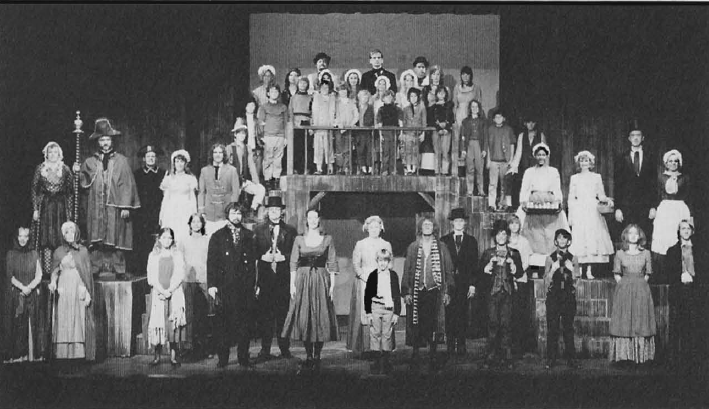
The cast of “Oliver!” (1972-1973)
The RLT summer production was “H.M.5. Pinafore” and the regular 1973-74 season opened October 10 with the Lerner and Loewe musical “My Fair Lady.” The leads were played by Jayne Watts, Jerry Folden, Dave McCormick, Glenn Miller, J. Kelly Gay III, Ray Maret and Bobbie Armstrong. Richard Cook, a master’s graduate of the University of Iowa, who had succeeded Jeffrey Thomson as technical director, got his baptism of fire designing the numerous sets required. “Competent and lively,” The Times said of the musical.
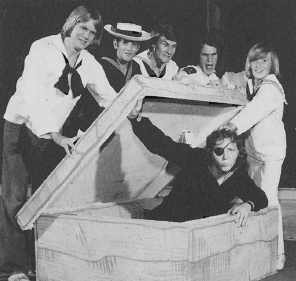
From “H.M.S. Pinafore” (summer 1973)
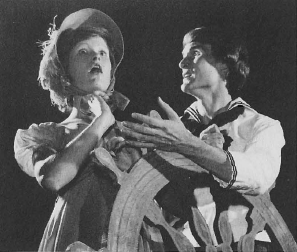
From “H.M.S. Pinafore” (summer 1973)
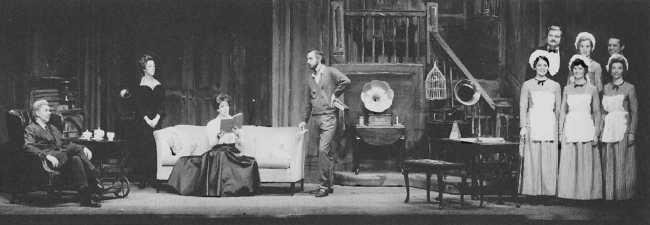
From “My Fair Lady” (1973-1974)
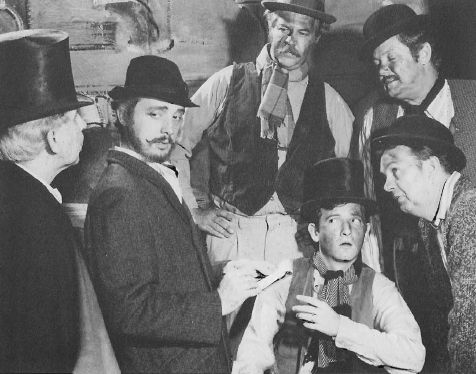
Jerry Folden as Henry Higgins listens to accents on the streets of London in “My Fair Lady” (1973-1974)
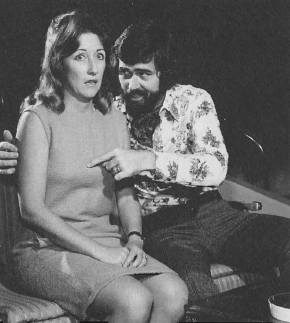
Bobbie Armstrong and Bob Keiber in “Plaza Suite” (1973-1974)
“Plaza Suite” (opening December 1. 1973), with some veteran cast members, among them Dave McCormick, Doris Dworsky, Barbara Mitchell and Mike Silver, got good reviews. Betty Hodges in the Durham Morning Herald was typical: “Gloss and polish.”
“Dial M for Murder” (opening January 30, 1974) starred Mike Shankle, Kathleen T. Harshberger, Arthur Zucker, Neville Golding and Ralph Stecker. Said D.D. Williams in The N&O: “Picks up the challenge and scores. Robert McDowell in The Times: “Has a little of the embalmer’s touch.”
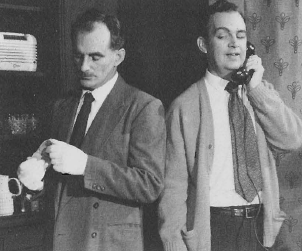
Neville L. Golding and Mike Shankle in “Dial M For Murder” (1973-1974)
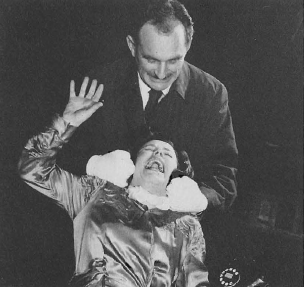
A tense moment from “Dial M For Murder” (1973-1974)
“Private Lives” (opening March 13, 1974) featured Wendy Wilson and Roland Lashley in the roles created by Gertrude Lawrence and Noel Coward, who wrote the play. “Fine acting in all its roles,” said McDowell of The Times.
“The Sound of Music” (opening May 1, 1974) starred Carolyn Bizzell and Neville Golding. The N&O: “It just wasn’t very good.” The Times: “Leaves much to be desired.”
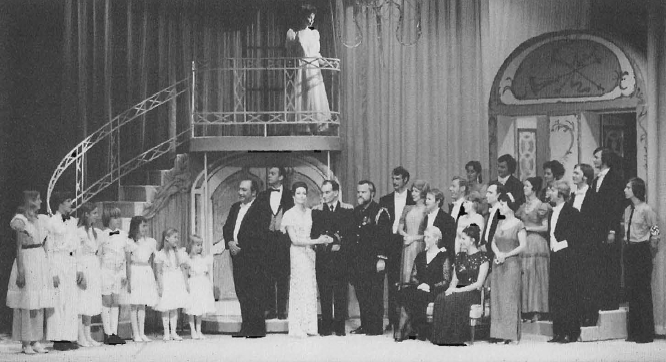
From “The Sound Of Music” (1974)
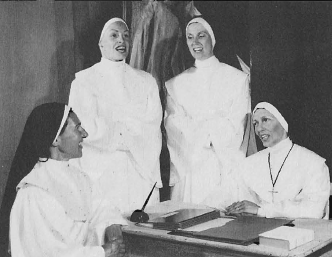
From “The Sound Of Music” (1974)

Ann Dearing Lincoln as the title character in “Hello, Dolly!” (1974-1975)
After special performances June 18-22, 1974, of “Night of January 16th” in the Wake County Courthouse (RLT had done the show many years before in the old county courthouse), the regular 74:75 season opened October 9, 1974, with the Jerry Herman musical “Hello, Dolly!” with Ann Dearing Lincoln in the title role. “A very disappointing evening,” said The N&O The production marked the first appearance of sets by a new technical director, George Sampedro, a free-lance New York designer who succeeded Richard Cook.
“Forty Carats” (opening December 4,1974) had a cast that included Doug Richmond, Lorena Goodwin, Peter Brooks, Lillian Orr, Ellen Smith, Gina Massel-Castater, Betty Dick, Doris Lee Allen, Mike Shankle and Danny Teal. Charles Horton of the Chapel Hill Newspaper called the production “an unflawed gem.”
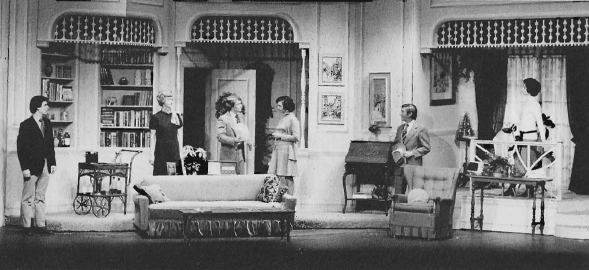
From “Forty Carats” (1974-1975)
“Cat on a Hot Tin Roof” (opening January 29, 1975) had a cast that included John A. Robertson as Big Daddy, The N&O called it “a fiasco.”
“The Man Who Came to Dinner” (opening March 12, 1975) had John T Hall, Marge Shankle, Glenn Miller and Barbara Brown in featured roles. “A pleasing, quietly diverting evening of theatre,” said Morrison of The N&O.
“Finian’s Rainbow” (opening April 30, 1975) starred Glenn Miller, Mike Shankle, Bobbie Armstrong and Fred Corlett. Said The N&O’s Bill Morrison: “It’s the real pot of gold at the end of director Anthony Dingman’s four-year stay at Raleigh Little Theatre. “A spirited triumph,” said Robert McDowell in The Times.
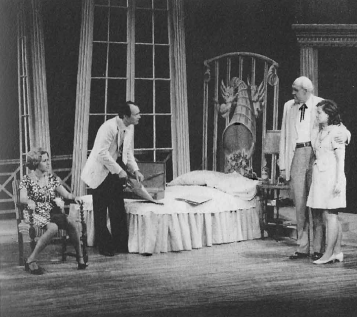
Scene from “Cat On A Hot Tin Roof” (1974-1975)
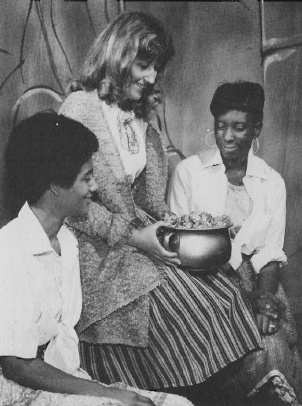
From “Finian’s Rainbow” (1974-1975)
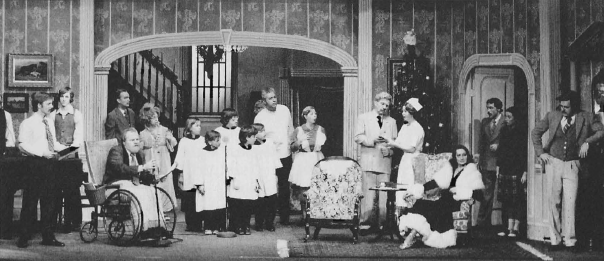
Cast of “The Man Who Came To Dinner” (1974-1975)
Dingman had announced earlier in the year that he would not seek renewal of his contract as manager-director. He was succeeded by Ronald Kent Campbell, a 29-year-old Oregon native and veteran actor on the dinner theatre circuit.
After a summer production of “Butterflies Are Free” (with a giant butterfly kite flying outside the Little Theatre), Campbell opened his first full RLT season with “George M!” (premiere on October 8, 1975). In the Cast were Joel Adams (in the title role), Ray Maret, Helene Robertson, L.A. Myers, Eileen Smith, Cathy Hawley and Gloria King. Former RLT director Dick Snavely did a turn as a vaudeville magician. “You’ll have no trouble enjoying this cotton candy musical,” said Bill Morrison of The N&O.
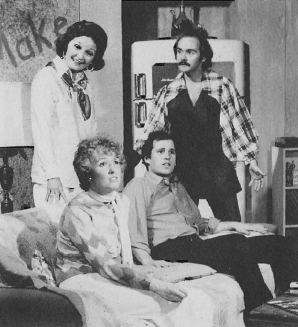
From “Butterflies Are Free” (1975-1976) left to right, Ann Dearing Lincoln, Paulette Dyson, Ron Jones and Rod Rich
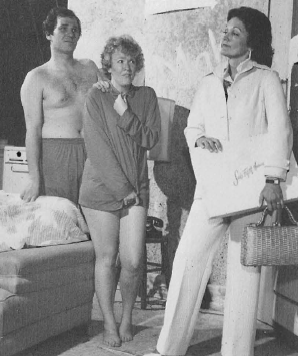
From “Butterflies Are Free” (1975-1976)
“The Night Thoreau Spent in Jail” (opening December 3, 1975) featured Ron Jones, Allan Osborne and John T. Hall. “Theatre at its best,” said Robert McDowell in The Raleigh Times.
“Look Homeward, Angel” (opening February 4, 1976), a revival of a previous RLT hit, brought back Jeannette Webb in her role of Eliza Gant, along with a strong supporting cast. Bill Morrison said in The N&O: “Jeannette Webb gives a performance so riveting, so deeply felt and beautifully wrought that she lends a touch of greatness to the revival.”
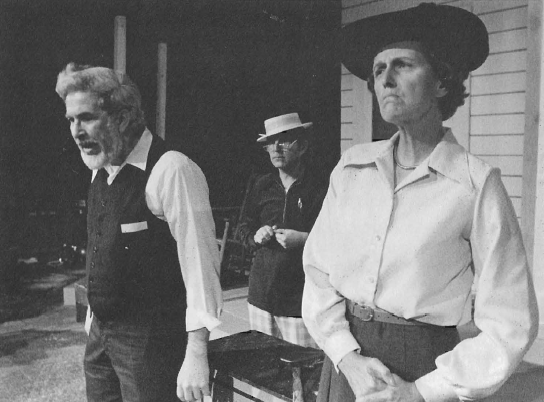
Glenn Miller, left, Bob Dean and Jeannette Webb in a scene from “Look Homeward, Angel” (1975-1976)
“The Fantasticks” (opening February 18, 1976) was an effort to launch RLT’s “Theatre Downstairs” in the Green Room. Said Morrison in The N&O: “The show pleases…. Bridget Munger is a darling and a vision (as The Girl).” “I Never Sang for My Father” (opening March 17,1976) was an RLT first with two separate casts-one all black, the other all white. Eugene Cheatham was guest director for the black version. Reviews were negative to lukewarm.
“Show Boat” (opening May 5, 1976) ended the season on an upbeat with Beth Leavel, Michael Daughtry, Kathy Montgomery, Doug Richmond, Susan Wilkins and Bob Pearson among the leading players. “The biggest and best musical to ‘dock’ at the Raleigh Little Theatre in a long, long time,” said McDowell in The Times.
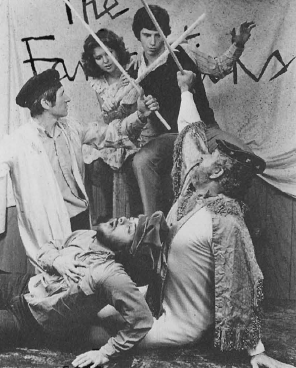
Scene from “The Fantasticks” (1975-1976)
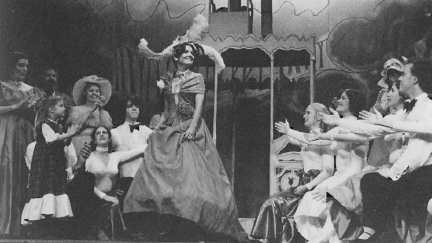
Scene from “Show Boat” (1975-1976)
At the end of the season, award winners received “Canteys.” The traditional awards were renamed to honor Cantey Venable Sutton, first lady of RLT. The summer 1976 productions were “You’re a Good Man, Charlie Brown” with Roy Dicks and Beth Leavel in the title roles, and two one-act plays “A Phoenix Too Frequent” and “Line.”
The 1976-77 season opened September 29, 1976, with Meredith Wilson’s “The Music Man.” Charles Parker played the leading role of Professor Harold Hill. “An entertaining musical that builds consistently,” said The N&O.
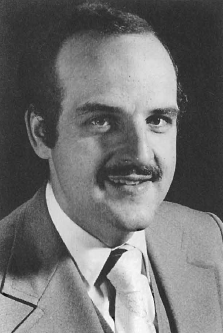
Ron Campbell, Director of Raleigh Little Theatre, 1975-1977
“Don’t Drink the Water” (opening December 1, 1976) starred Ann Dearing Lincoln and Glenn Miller. “A spirited revival,” said The Times.
“The Miracle Worker” (opening February 2, 1977) had Gloria King and Lisa Ann Cutrell in the roles of Annie Sullivan and her pupil, Helen Keller. Robert McDowell of The Times praised the performance and singled out for favorable mention the sets of Thomas Van Tine Hart, the new RLT technical director.
“Ten Little Indians” (opening March 16), with guest director Allan W. Osborne, was “a smartly staged and well-paced production,” said The Times.
The final show of the season was “Godspell” (opening May 4, 1977). Marlene Hart directed and the opening performance received a standing ovation.
Director Ron Campbell had announced earlier in the season that he would not seek a new contract. “I was hired as a person who could heal wounds and that we have done. We lost the factions.”
As his successor, The Little Theatre board turned to L. Newell Tarrant, who had been RLT’s first paid director in 1945. Tarrant had just completed a 15-year career as director of the prestigious Honolulu Community Theatre.
It was the start of a period in which the Raleigh Little Theatre was to consolidate its gain and move toward the future with confidence and plans for expansion.